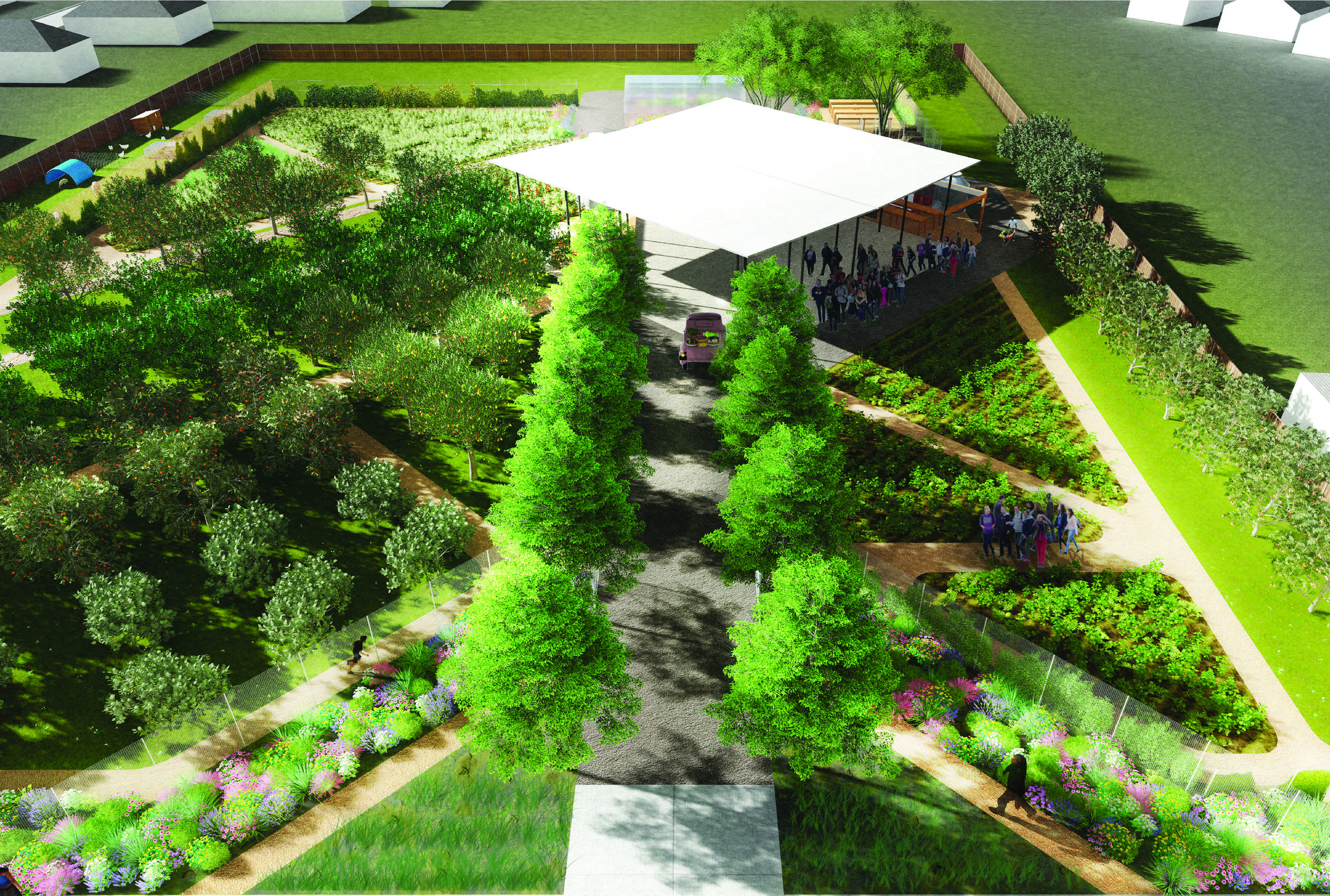
Mill City Teaching Farm : A Multi-Enterprise Integrated Strategy
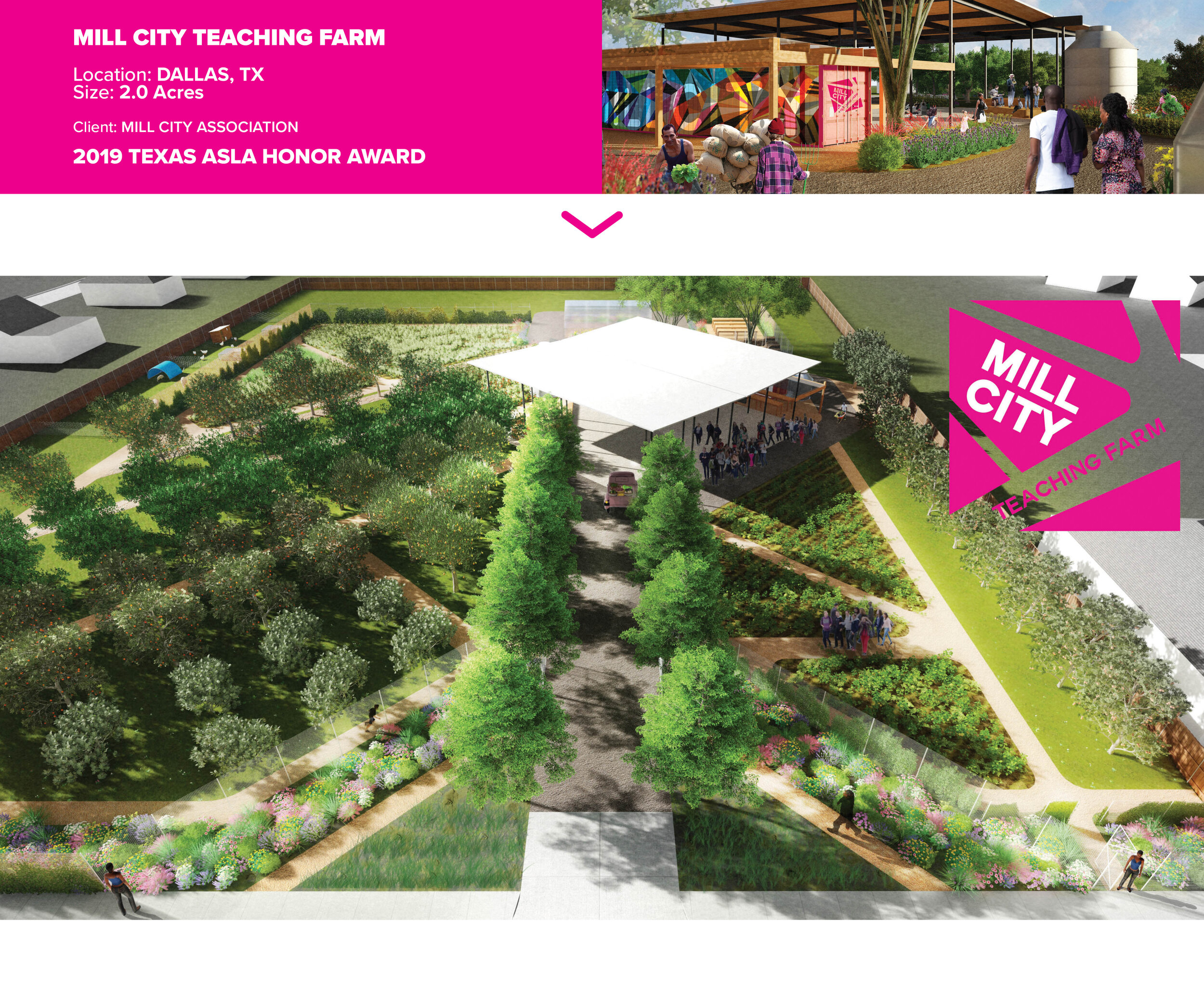
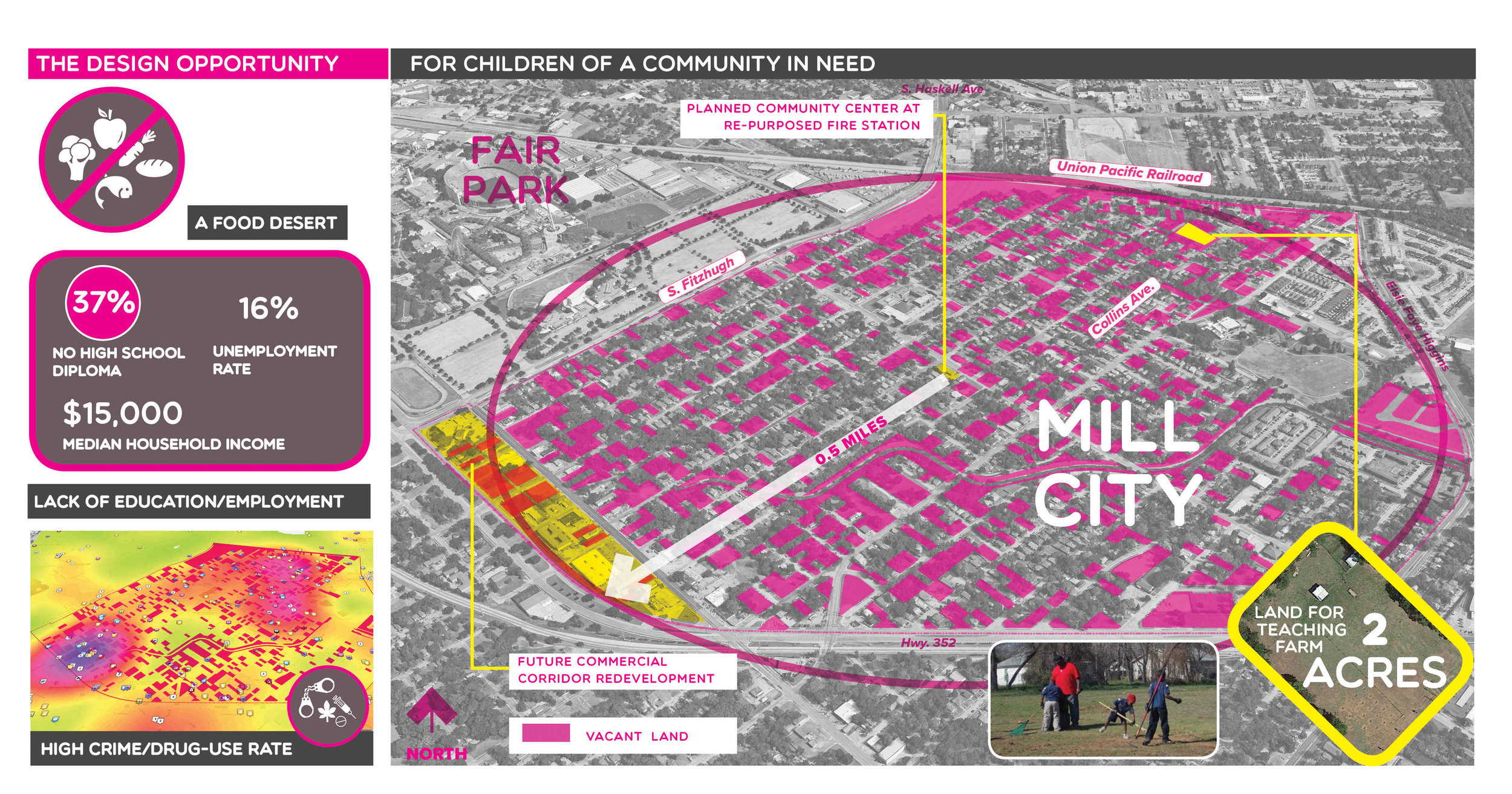
Mill City is an urban community located in Southeast Dallas. Mill City is an under-served, low-income community in what is called a "food desert" area. In the past, drugs and crime have taken over and causing businesses to relocate and the area has been neglected for decades. As a result, the community is surrounded by vacant lots that cause overgrown vegetation and illegal dumping.
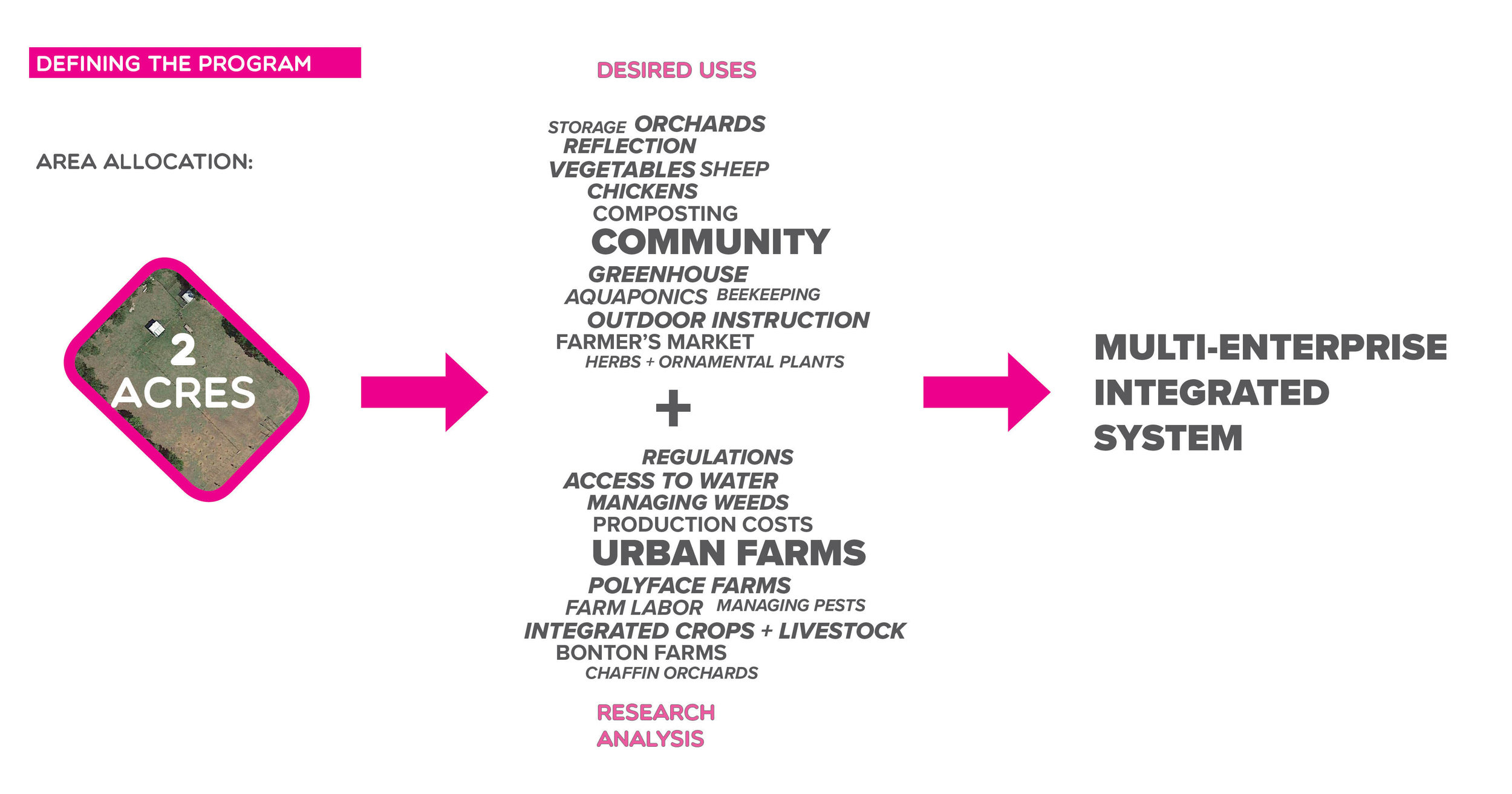
The DELINEATOR team met with local leaders in 2017 to explore the selected site and discuss all of the desired uses and goals for the urban farm. The team then conducted extensive research into the various programs and contemporary agricultural systems focused on integrating various enterprises with the goal of lowering operational costs and required labor for the farm. The result of that research is the multi-enterprise integrated agricultural system that follows.
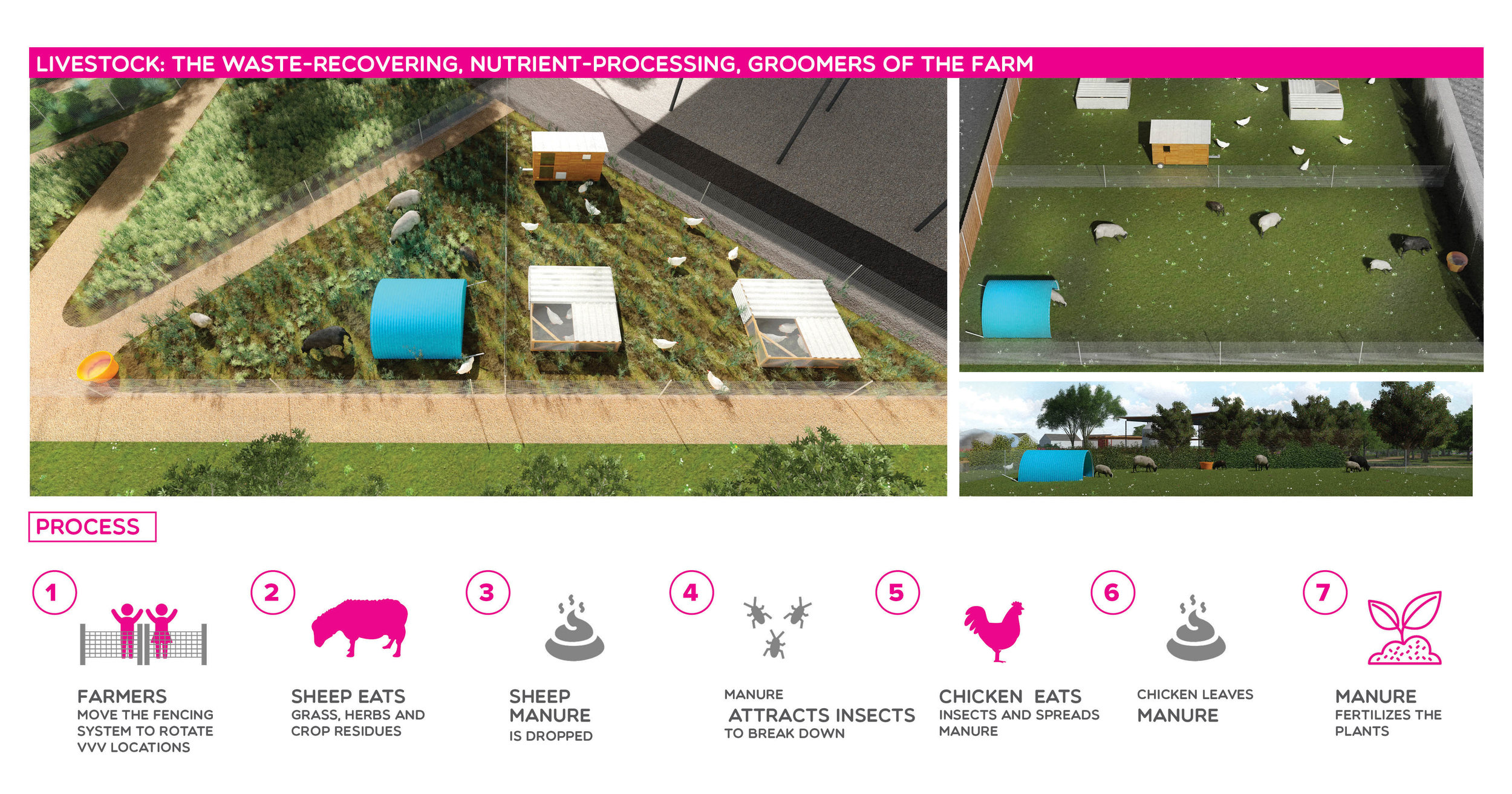
The most important form generator for the farm layout is the movable paddock unit which equates to approximately one week of grazing potential. The depth of the paddocks along the back fence line was designed to accommodate temporary parking for community events while the angled orientation of the crop rows and orchards follow true N-S. Plots for crops, orchards, and managed pasture are organized around social spaces for outdoor education as well as large community events.
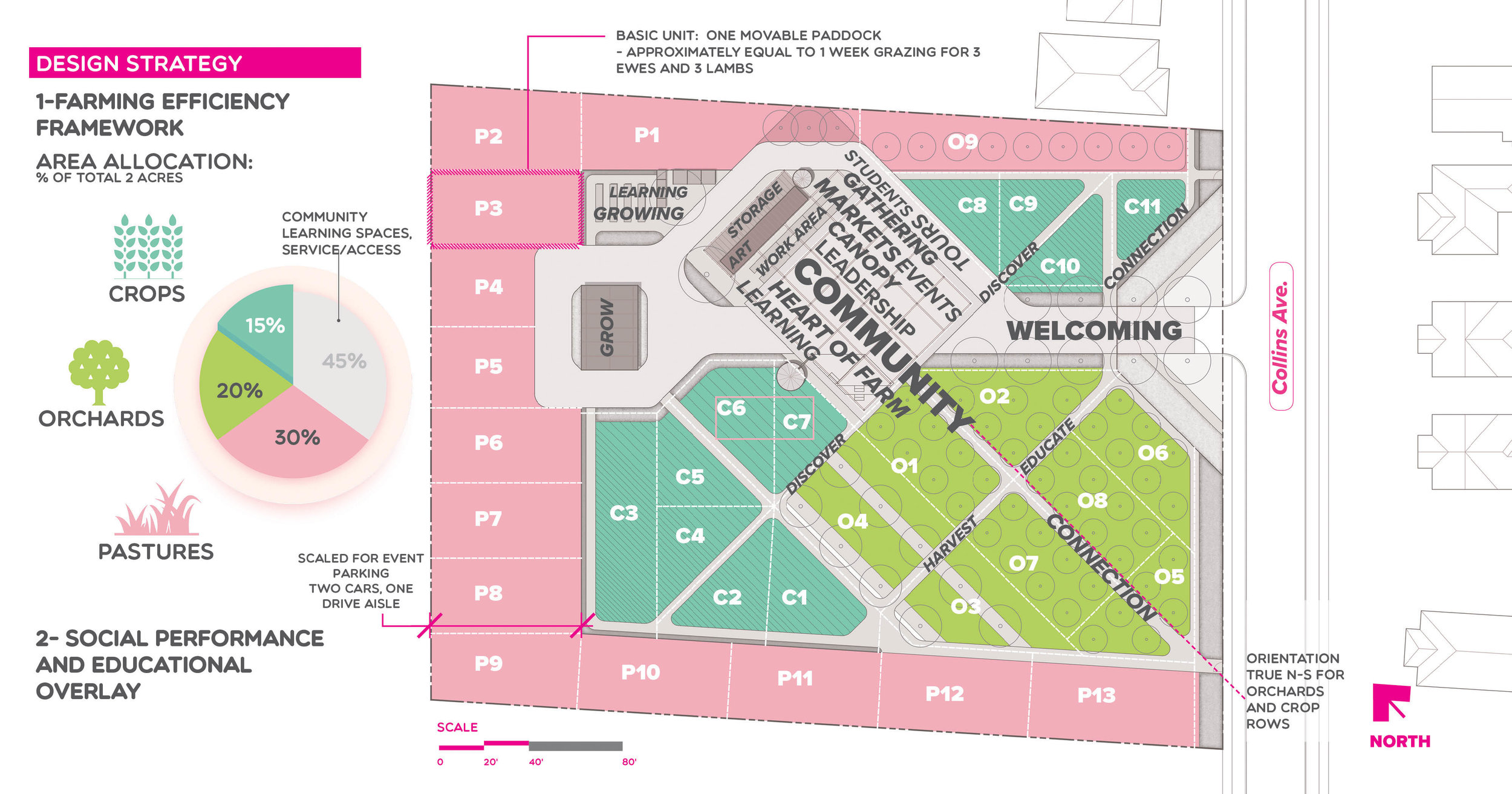
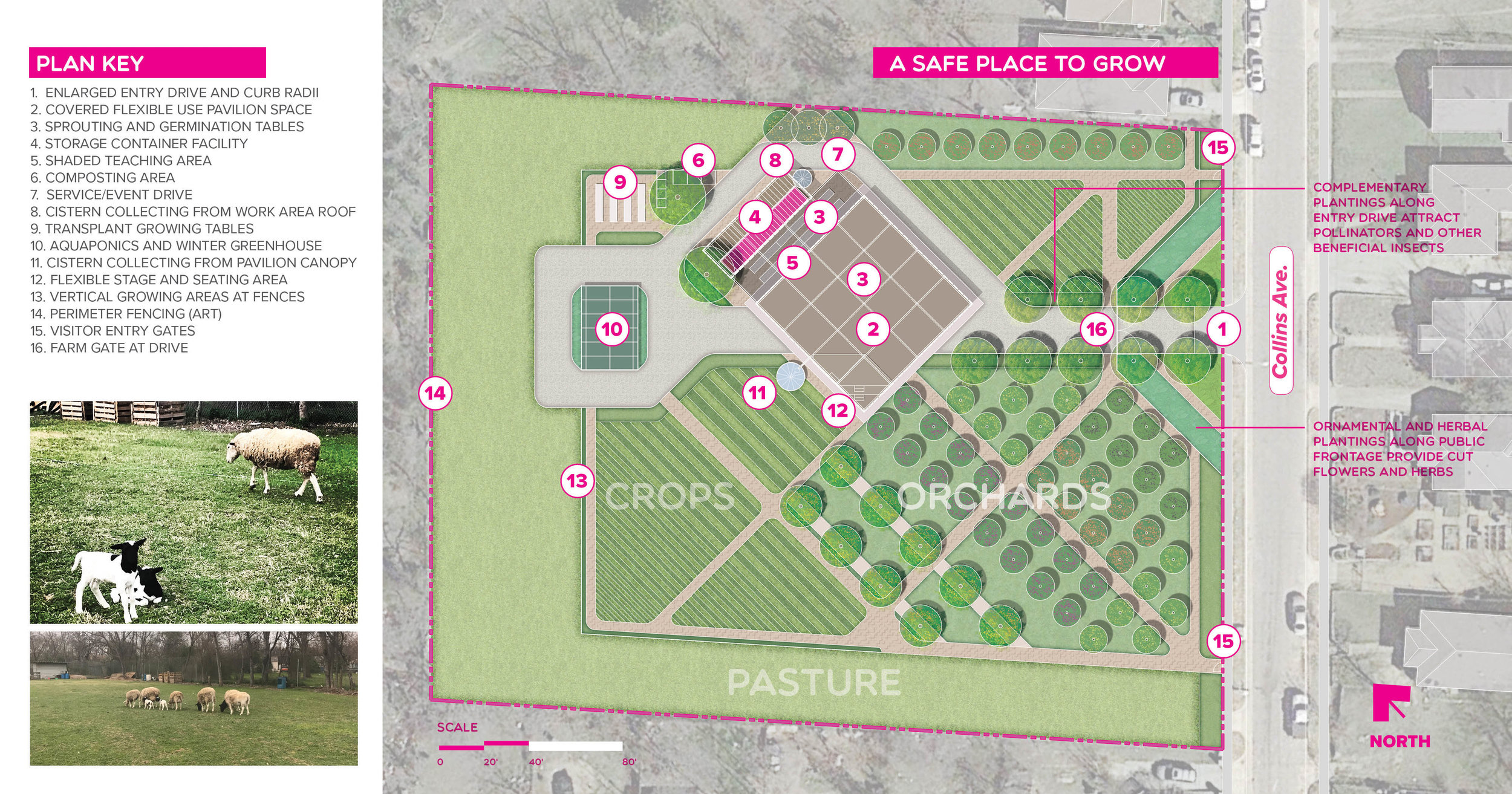
The basic concept for the farm uses multiple species of livestock (sheep and chickens) to graze in a high-intensity, low-frequency system the full farm space. The animals essentially provide labor by fertilizing and sanitizing the soil while recycling the nutrients in spent crop residues. The main responsibility of the farm helpers in this system is to move the sheep and chickens each week to a new grazing area. This lowers the required inputs for both the livestock and crop enterprises while lowering the overall labor requirement and evening it out over the course of the year.
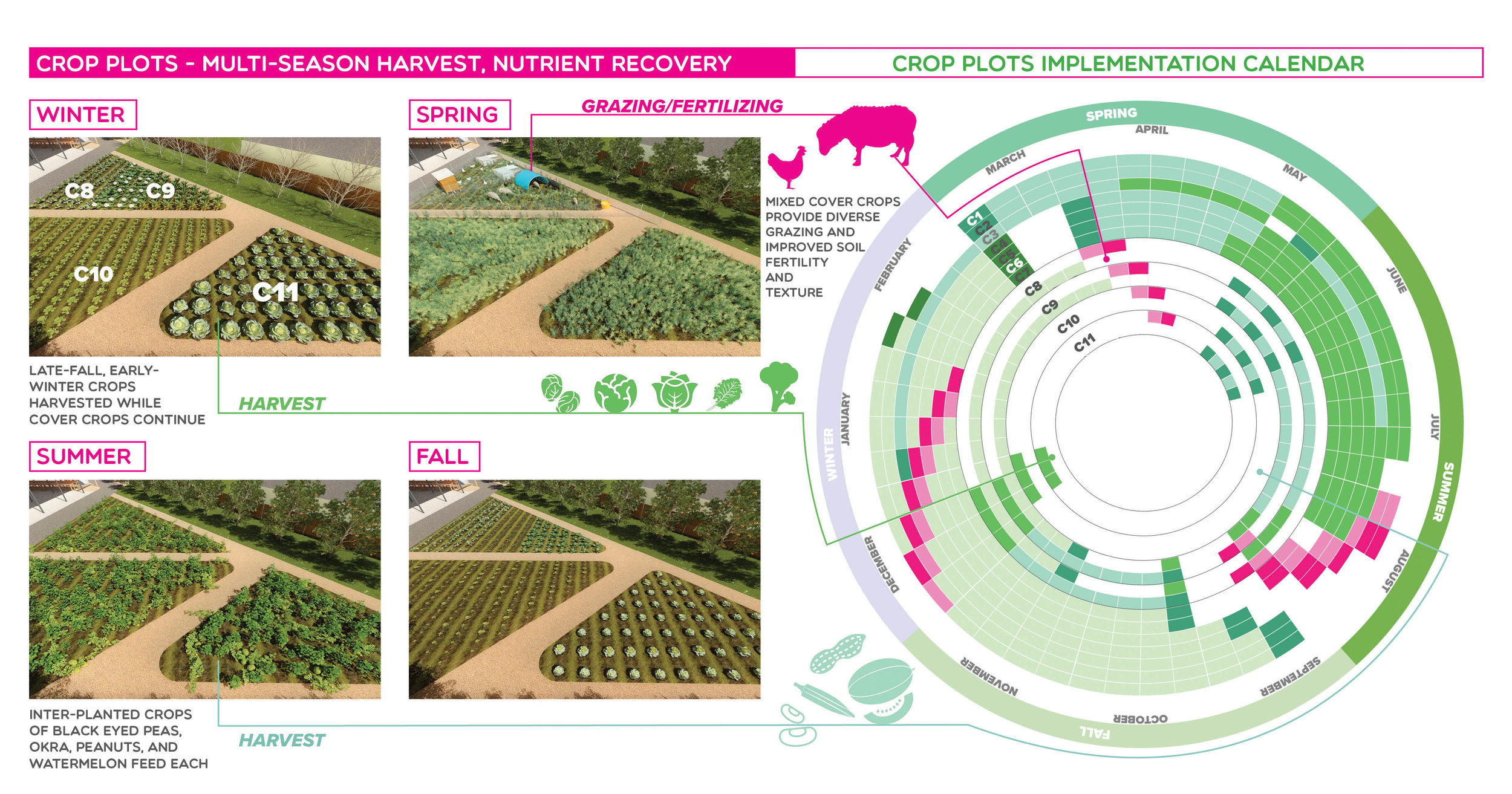
The DELINEATOR design team developed a comprehensive farm calendar to help guide the operations of the farm. A large variety of fruits and vegetables is proposed to provide interest, educational opportunity, and even out the required labor throughout the year. This is in contrast to most farms with mono-cultures that require very large labor requirements in short windows at planting and harvest. The Mill City Teaching Farm will look, smell, and taste differently throughout the year.
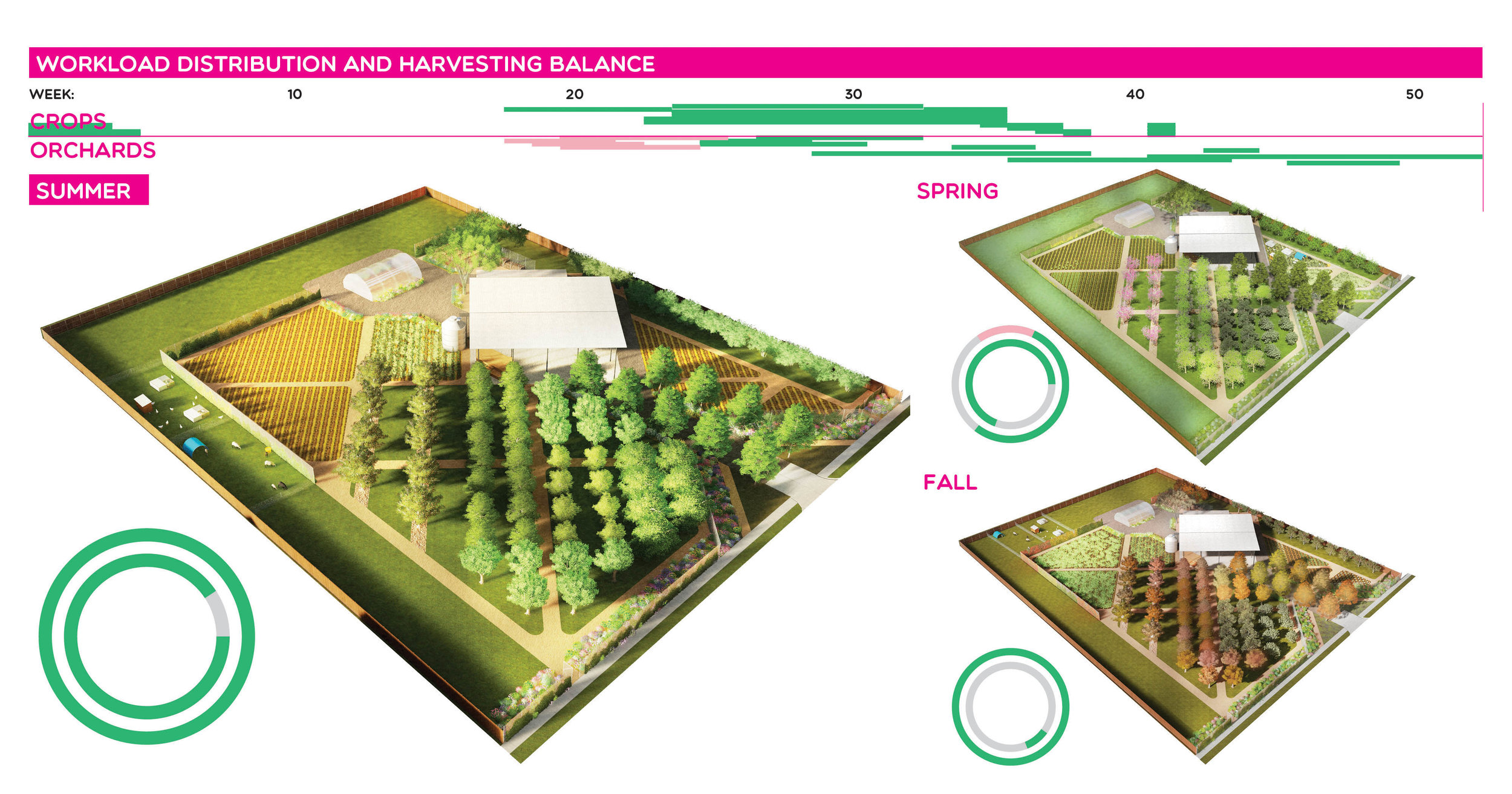
The compact size of the farm necessitates using every part of it as much of the year as possible. This image illustrates the various market crops, cover crops, and grazing that occurs on a handful of vegetable plots throughout the different seasons. The calendar to the right illustrates when grazing of the crop plots will occur as well as when different crops will be sown and harvested.
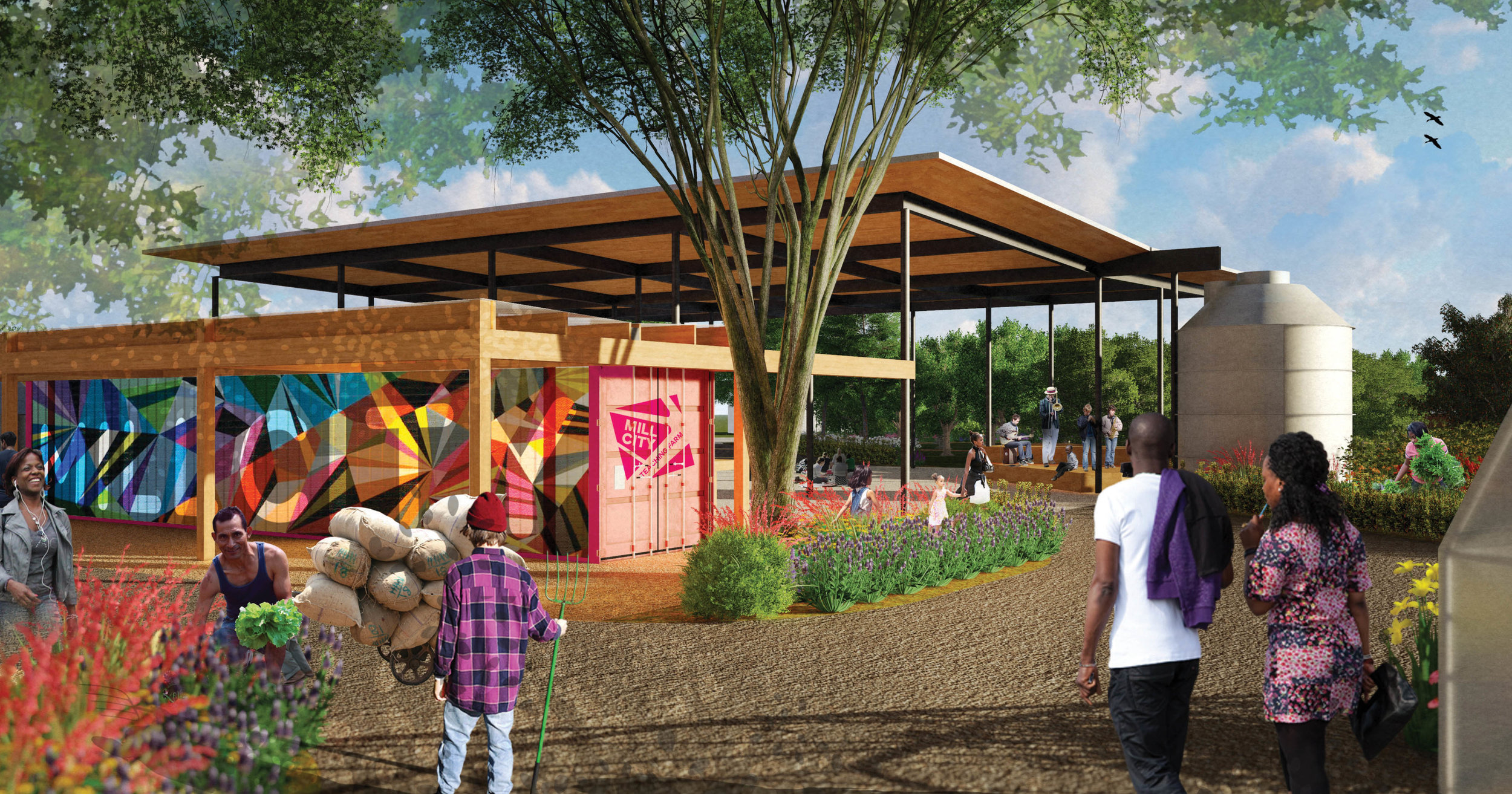
The integrated system rotates cover crops and market crops, but also uses them interplanted with market crops as shown with the tomatoes and peppers. This reduces erosion and compaction of the soil, fixes nitrogen during the growing season and creates additional forage for the livestock when they come through and graze the crop residues. Large above-grade water cisterns collect water for reuse and provide iconic elements for identifying the farm in the community.
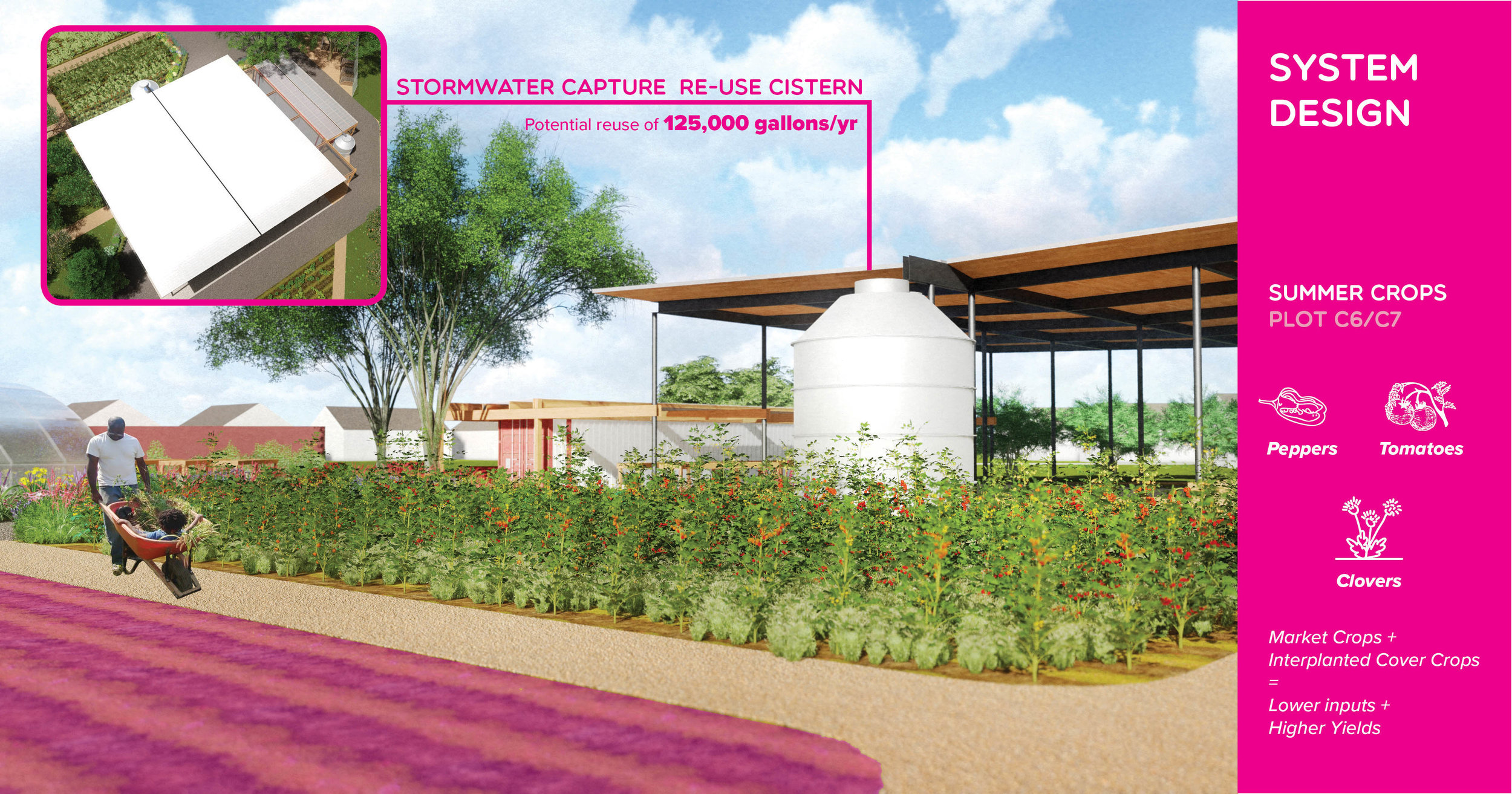

2019 Award of Honor, Texas Chapter of The American Society of Landscape Architects
“This project was beautiful and clear in both presentation and design. The program and diagrams really give this submission a boost. ”
